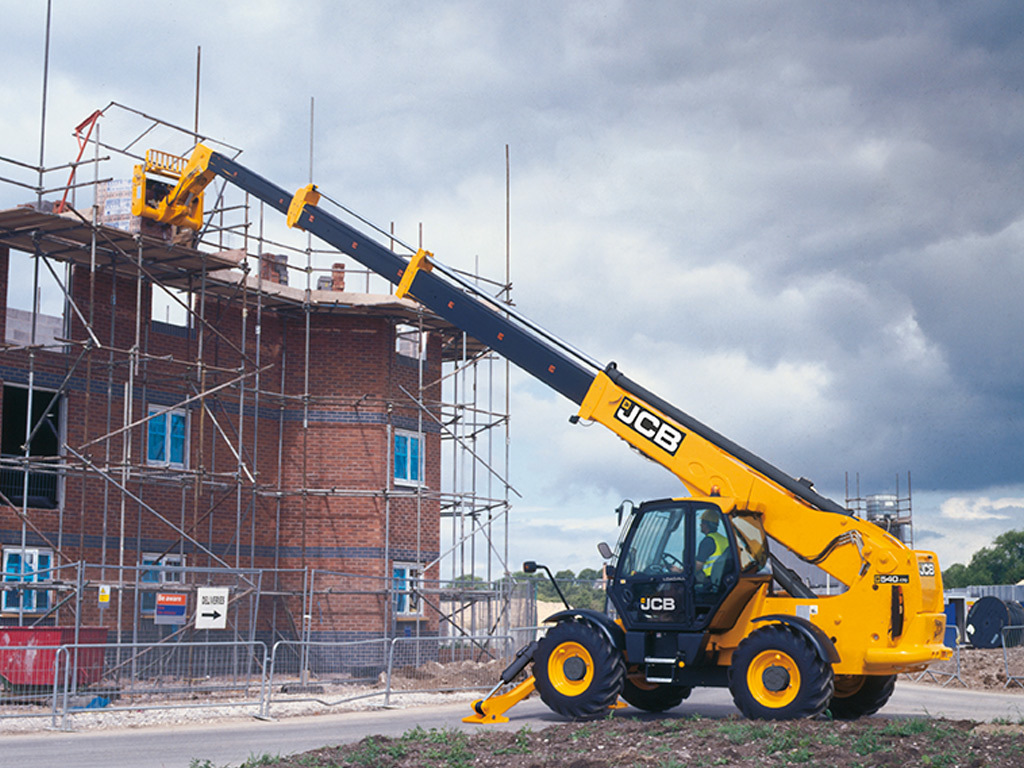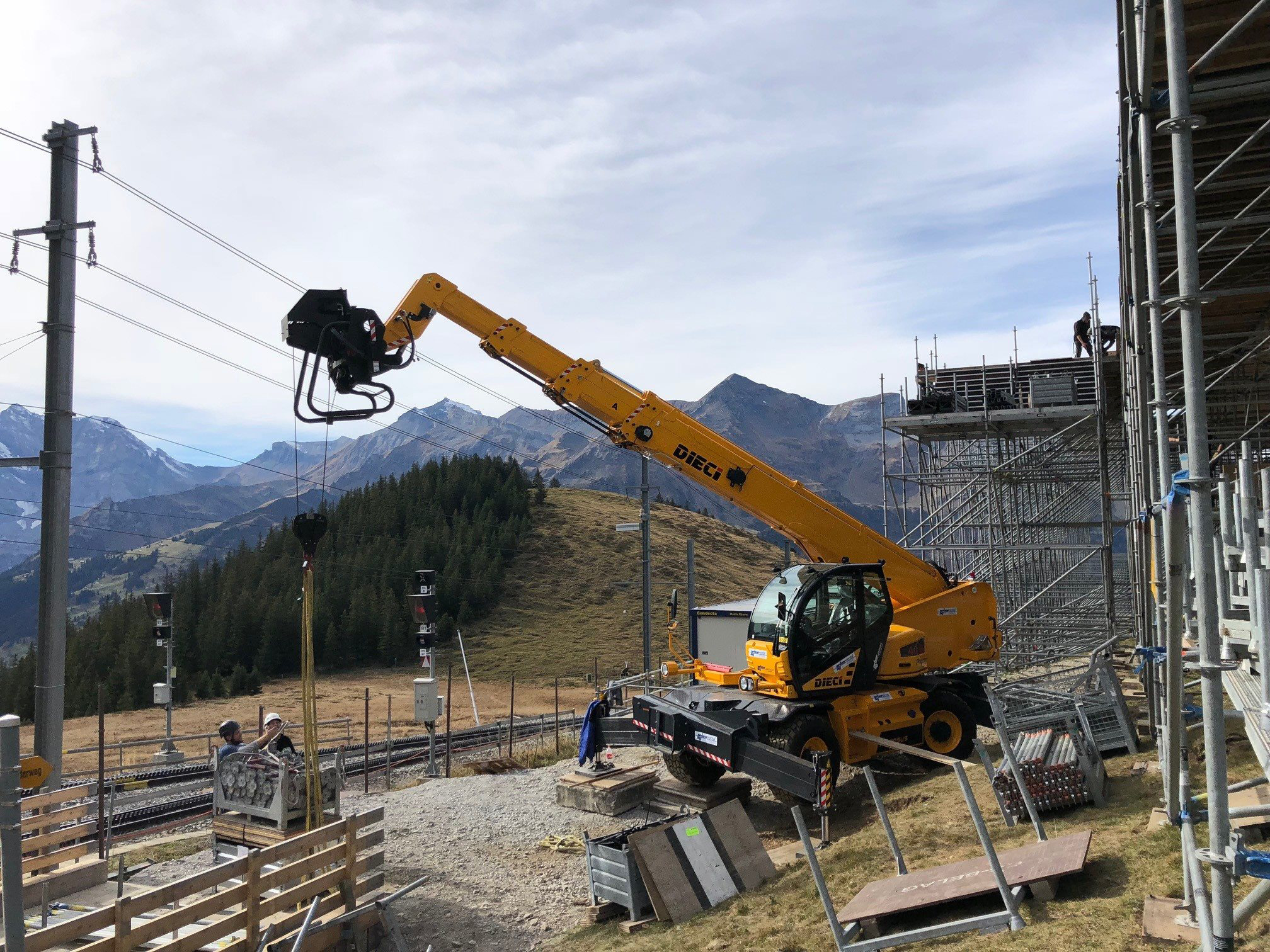Adjustable Pivoting Forklift Jib Boom Cranes Convert Forklifts Into Mobile Jib Boom Cranes for Material Handling Applications. These Jib Boom Cranes are made of powder coated steel to prov. See all 7 items in product family. Shorty Forklift Jib Boom Cranes. The Brandon Telehandler line of mini cranes are capable of being equipped with any of the attachments listed below. We designed the attachments for easy removal and installation. See all cranes for sale on the Crane Network, a leader in Telehandler Forklift Sales. Over 30,000 companies and individuals rely on our online services to effectively manage their fleet for the sale and rental of cranes and equipment. Magni’s HTH Series are the STRONGEST telehandlers in the world. With 8 models and lifting capacities from 22,000 - 110,000 lbs., Magni’s are the leader in heavy lifting. Sharing the same engineering and technological excellence as all Magni’s, our heavy lifting machines deliver on safety and productivity. Telehandlers Cranes for Sale and Rent A telescopic handler, also called a telehandler, teleporter, or a boom lift is a lifting device used in agriculture and industry. It is like a forklift but has a telescopic boom.


Telescopic Boom Forklift

Stevenson Crane Rental
OSHA requirements are set by statute, standards and regulations. Our interpretation letters explain these requirements and how they apply to particular circumstances, but they cannot create additional employer obligations. This letter constitutes OSHA's interpretation of the requirements discussed. Note that our enforcement guidance may be affected by changes to OSHA rules. Also, from time to time we update our guidance in response to new information. To keep apprised of such developments, you can consult OSHA's website at https://www.osha.gov.
Telehandler Crane Hook Attachment
June 21, 2012
The Honorable Jeff Miller
4300 Bayou Blvd, Suite 13
Pensacola, FL 32503
Dear Congressman Miller:
Thank you for your correspondence to the Department of Labor's Occupational Safety and Health Administration (OSHA) regarding the use of forklifts for construction activities. I appreciate the opportunity to respond to you and your constituents.
In your inquiry, you forward a copy of an ASK OSHA e-correspondence submitted to OSHA on November 4, 2011, from your constituent Mr. Keith Raffield. I appreciate your patience, as the process for achieving resolution to very complex compliance issues can be lengthy. Among several other major issues in the construction industry, OSHA has been in the process of responding to many interpretative inquiries such as this one regarding the scope and application of our final rule for Cranes and Derricks in Construction.
In his inquiry, Mr. Raffield asks OSHA the following question:
Can I, as a forklift (not a crane operator) operator, use a designated forklift boom that has a hook on it as long as it meets the load requirements?
OSHA's response to Mr. Raffield's inquiry depends upon not only the original design of the forklift that is used, but also the design of the boom attachment and how the forklift and boom are operated together to move the load. We recognize that our ASK OSHA webpage was not designed to provide for the submission of attachments with inquiries from the public, therefore the picture and description of the forklift in question that was provided with your inquiry was very helpful for making this determination.
Equipment that is designed to function as both a crane and a forklift would be considered multi-purpose equipment and covered by the crane standard when configured, and operated as, a crane. However, Mr. Raffield submitted a picture of, and information about, a typical vertical mast forklift with a variable length boom attachment that uses slings or a rope to hoist and move a suspended load. This type of forklift described was designed by the manufacturer to lift palletized loads or those that can be safely handled and supported by the forks of the equipment. The described configuration of a forklift, unlike a crane or derrick, can only provide powered horizontal and vertical movement of the suspended load by both driving the forklift horizontally in addition to moving its mast and forks. Although the described boom attachment extends the reach of the forks, it was not designed to provide powered horizontal and vertical movement of the load. This forklift configured with the described boom attachment is not covered by the cranes standard.
OSHA will continue to work with the industry and plans to issue responses to over 30 frequently asked questions to clarify requirements regarding the application of the Cranes and Derricks in Construction standard. I hope you have found this letter helpful and informative. If you have any additional questions, please contact Laura de la Torre in the Office of Congressional and Intergovernmental Affairs at (202) 693-4600.
Sincerely,
David Michaels, PhD, MPH
cc: Cong. Jeff Miller, Washington, DC Office

